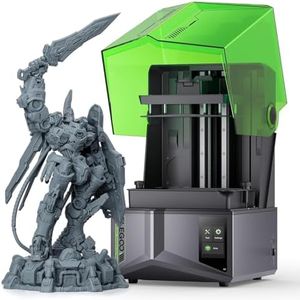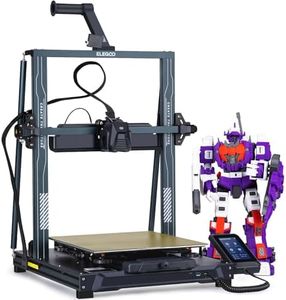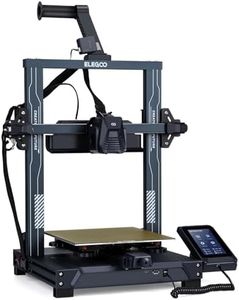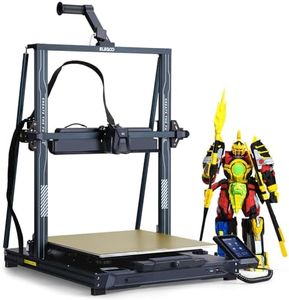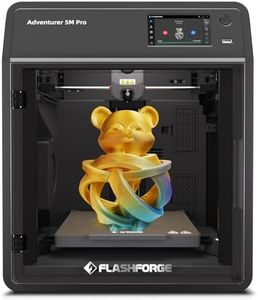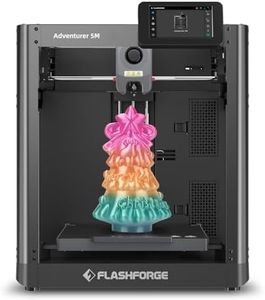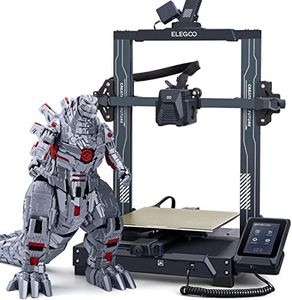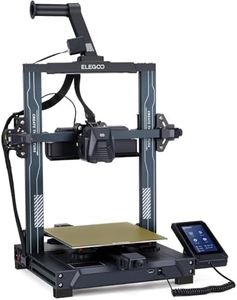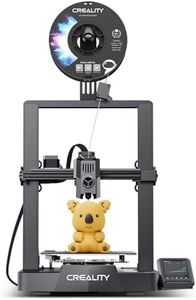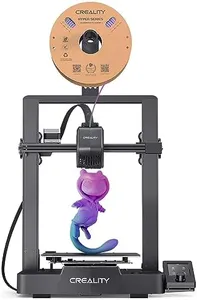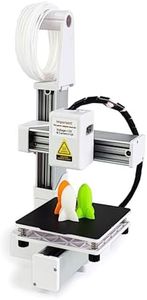We Use CookiesWe use cookies to enhance the security, performance,
functionality and for analytical and promotional activities. By continuing to browse this site you
are agreeing to our privacy policy
10 Best Cheap 3D Printers
From leading brands and best sellers available on the web.Buying Guide for the Best Cheap 3D Printers
Choosing a 3D printer, especially at an affordable price point, can be exciting but also a bit overwhelming given all the different features and specifications to compare. The best approach is to first consider what you actually want to print: Are you interested in making small prototypes, toys, practical household items, or are you looking for quality and detail for arts and crafts? Knowing your expected use and skill level will help you weigh the important features and avoid paying for extras you don't need. Always remember that while cheaper models can be great for beginners, it’s important to understand what to expect in terms of performance and possible limitations.Build VolumeBuild volume refers to the maximum size an object can be when printed, usually expressed in the format (length x width x height). This is important because a larger build volume means you can print bigger items in a single piece, whereas a smaller build volume may restrict what you can create or require you to assemble larger items from multiple smaller parts. For hobbyists or those making small items, a smaller build volume (like 120x120x120mm) is often enough and makes for a more compact, easier-to-place printer. If you know you'll need to print bigger objects, look for models offering larger spaces—just be aware these tend to take up more room and can be a bit more complex to maintain.
Print Technology (FDM vs SLA)The most common affordable 3D printers are FDM (Fused Deposition Modeling) or SLA (Stereolithography). FDM printers use melted plastic filament and are great for users looking for robust, functional parts with easier handling and cheaper materials. SLA uses liquid resin and is known for much higher detail and smoother surfaces, but can be messier and requires more effort in post-print cleaning. If you want simple, practical, or colorful objects, start with an FDM 3D printer. If your priority is very fine detail (like figurines or jewelry models), consider saving a bit more for an entry-level SLA printer.
Layer ResolutionLayer resolution, typically measured in microns, tells you how thick each layer of material is. Lower numbers (like 50 microns) mean finer details but slower print times, while higher numbers (like 200-300 microns) print faster but with more visible layer lines. If you care most about how smooth or detailed the finished print looks, aim for a printer that supports lower layer resolutions. For oversized, functional parts where surface detail is less of a concern, higher resolutions are perfectly fine and can save you time.
Heated BedA heated bed ensures the print stays firmly attached during printing and reduces issues like warping or peeling, especially when using plastics like ABS. For those new to 3D printing or planning to use only PLA, a non-heated bed can be sufficient and often makes the printer simpler and cheaper. However, having a heated bed adds versatility, so it’s a helpful feature if you want to experiment with different materials down the road.
Ease of AssemblySome printers come fully assembled, some as kits, and others are somewhere in between. Fully assembled models are plug-and-play and best if you want to start printing right away. Kits or largely unassembled models are generally more affordable and let you learn more about how the printer works, but take more time to set up and require following instructions carefully. Think about your patience, technical skills, and whether you see the value in learning basic mechanics from assembling your printer versus having a simpler start.
Supported MaterialsDifferent printers may only work with certain types of plastic or resin, and each material has its own pros and cons. Most entry-level printers support PLA filament (easy to print, lots of colors, no heated bed needed). If you plan to print items that need to be more heat-resistant or durable (like ABS or PETG), ensure the printer supports those materials. The more materials a printer can handle, the more flexible it is for future projects, but for learning and everyday use, basic PLA support is usually more than enough.

